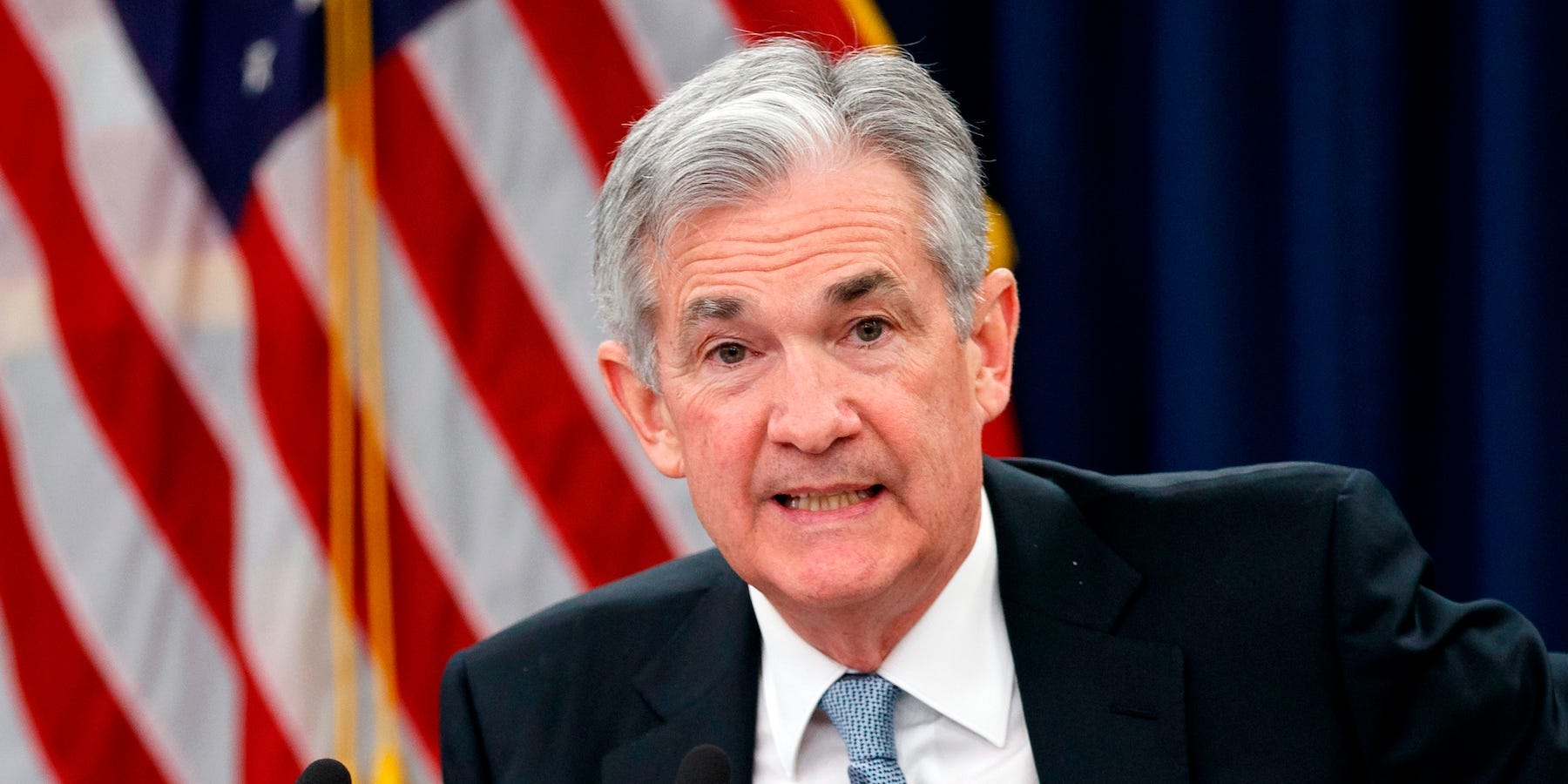
Carolyn Kaster/AP
- It's "not yet" time for the Fed to even consider pulling back its policy support, Chair Powell said.
- Fed policymakers ruled to hold interest rates at historic lows and maintain its asset purchases.
- The recovery is "highly uncertain" and the economy is far from hitting the Fed's goals, Powell said.
- See more stories on Insider's business page.
The Federal Reserve expects a strong economic recovery through 2021, but it still aims to maintain ultra-easy financing conditions well into the future.
Members of the Federal Open Market Committee ruled on Wednesday to hold interest rates at historic lows following the conclusion of its two-day meeting. The central bank will also maintain its pace of purchasing at least $80 billion in Treasurys and $40 billion in mortgage-backed securities each month, according to a press release.
Buying such assets accommodates smooth market functioning and thereby supports "the flow of credit to households and businesses," the Fed said in a statement.
Yet investors and economists alike have looked to Fed officials in recent weeks for any hints at when the central bank will taper its purchases. An unexpected withdrawal from the Fed could spark a sell-off in Treasurys, rapidly lift yields, and prematurely raise borrowing costs while the economy is still rebounding.
Policymakers' newly improved projections for growth and employment place new pressure on the central bank to tighten monetary policy. Still, it's "not yet" time to even consider tapering due to lasting risks to the economic outlook, Powell said during a press conference.
Concerns of a rate hike coming earlier than the Fed's signaling also overlook the lasting risks to the US recovery, the central bank chief added.
"The state of the economy in two to three years is highly uncertain and I wouldn't want to focus too much on the timing of potential rate increase that far into the future," Powell said.
Staying on target for inflation and maximum employment
The statement underpins previous commentary from the Fed emphasizing it will patiently wait to reach its goals of above-2% inflation and maximum employment. Economic reopening and stimulus might drive a sudden rise in inflation, but the increase isn't likely to be permanent, Powell said.
Inflation would then need to steadily trend above 2% before the Fed fully retracts its policy support, he added.
Reaching maximum employment is set to be a similarly lengthy process. While Fed officials now see the unemployment rate falling to 4.5% in 2021, the central bank is also tracking wage growth and labor force participation to determine the labor market's health.
"No matter how well the economy performs, unemployment will take quite a time to go down and so will participation," Powell said. "The faster the better. we'd love to see it come sooner rather than later."
Maintaining loose monetary policy for such a long period marks a paradigm shift for the central bank. Decades-old tenets of economic theory held that unemployment could only drop so much before lifting inflation.
That dynamic is antiquated, at least according to the Fed chair. The previous expansion showed that, even with unemployment below 4% and inflation trending below 2%, hiring and wage growth could improve in historically underserved communities. Failing to give those groups a shot at a robust recovery would set the country back as it emerges from the pandemic, Powell said.
"There was a time when there was a tight connection between unemployment and inflation. That time is long gone," he said. "We had low unemployment in 2018 and 2019 and the beginning of '20 without having troubling inflation at all."
